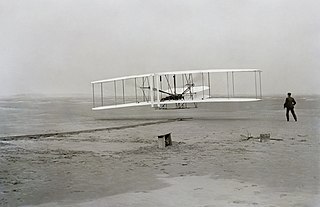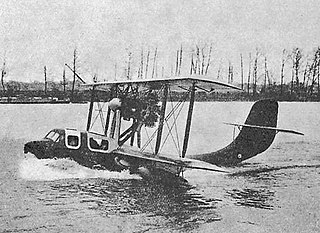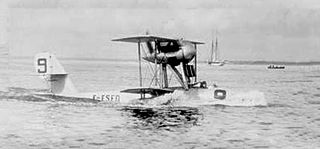Operators
 Brazil
Brazil
| Farman F.51 | |
|---|---|
| Role | Maritime reconnaissance flying boat |
| Manufacturer | Farman |
| First flight | 1922 |
The Farman F.51 was a 1920s French maritime reconnaissance flying boat designed and built by Farman. The F.51 was an unequal-span four-bay biplane flying boat with a crew of four. It was powered by two Lorraine 8bd engines mounted in tractor configuration. A pusher engined version was designated the Farman F.50 (even though the designation had been used before in 1919). Tested by the French Navy but it failed to win any orders, Farman did briefly consider a civil version but the project was abandoned.
Data from The Illustrated Encyclopedia of Aircraft (Part Work 1982–1985), 1985, Orbis Publishing, Page 1737
General characteristics
Performance
Armament
Related lists

In an aircraft with a pusher configuration, the propeller(s) are mounted behind their respective engine(s). According to British aviation author Bill Gunston, a "pusher propeller" is one mounted behind the engine, so that the drive shaft is in compression in normal operation.

The Felixstowe Porte Baby was a British reconnaissance flying boat of the First World War, first flying in 1915.

The Franco-British Aviation Model 290 was a French four-seat amphibian flying boat built by the Franco-British Aviation Company (FBA) as a replacement for the Model 17 in French naval service.

The FBA Type 310 was a 1930s French touring flying boat or amphibian built by the Franco-British Aviation Company.

The Farman F.50 was a French twin-engined night bomber designed and built by Farman as a replacement for the single-engined Voisin pusher biplanes in service with the French Air Force.

The Farman F.180 Oiseau Bleu was a 1920s French biplane airliner. The F.180 was designed to fly non-stop between Paris and New York, but when the crossing attempt was cancelled three aircraft were built as luxury transports to operate from Paris to nearby European capital cities for the company's own airline.

The Farman F.70 was a 1920s French passenger and mail transport aircraft designed and built by the Farman Aviation Works. It was a smaller counterpart to the company's popular F.60 Goliath. The F.70 was an unequal-span two-bay biplane with a wooden fuselage and was powered by a Renault 12Fe piston engine. The pilot was seated in an open cockpit behind the nose-mounted engine. Behind the open cockpit was a cabin for four passengers or freight.

The Loire 102 was a 1930s French flying boat designed as a mail plane by Loire Aviation.

The Lohner L was a reconnaissance flying boat produced in Austria-Hungary during World War I. It was a two-bay biplane of typical configuration for the flying boats of the day, with its pusher engine mounted on struts in the interplane gap. The pilot and observer sat side by side in an open cockpit, and both the upper and lower sets of wings featured sweepback.

The Macchi M.5 was an Italian single-seat fighter flying boat designed and built by Nieuport-Macchi at Varese. It was extremely manoeuvrable and agile and matched the land-based aircraft it had to fight.
The Macchi M.8 was an Italian reconnaissance/bomber flying boat designed by Alessandro Tonini and built by Macchi. It was used by the Italian Naval Aviation and was later flown by crews from the United States Navy.
The Farman B.2 was a 1920s French biplane designed as a light day bomber. Only one was built.
The Farman F.80 was a 1920s French biplane designed by Farman as a basic trainer.
The Farman F.150 was a 1920s French twin-engined biplane designed by Farman as a day bomber.
The Beriev MBR-7 was a Soviet short-range reconnaissance/bomber flying boat developed by the Beriev design bureau at Taganrog. Designed as a successor to the MBR-2 but it did not go into production due to lack of engines.

The Fokker D.XXIII was a Dutch single-seat fighter designed and built by Fokker. Only one aircraft was flown before the country was invaded by the Germans in May 1940.

The Farman F.211 was a French four-seat day or night bomber designed and built by the Farman Aviation Works for the French Air Force.

The CAMS 38 was a French single-seat racing flying-boat designed by Raffaele Conflenti and built by Chantiers Aéro-Maritimes de la Seine (CAMS) for the 1923 Schneider Trophy race. The CAMS 38 was withdrawn from the race during the second lap.

The CAMS 36 was a 1920s French flying boat designed and built by Chantiers Aéro-Maritimes de la Seine. It was originally conceived as a single-seat fighter but evolved as a racer to compete in the 1922 Schneider Trophy race. Lack of funds in 1922 and an accident in 1923 meant the two aircraft built failed to participate in a Schneider race.
The Vickers Hydravion (No.14) was a British seaplane built by Vickers in the early 1910s.